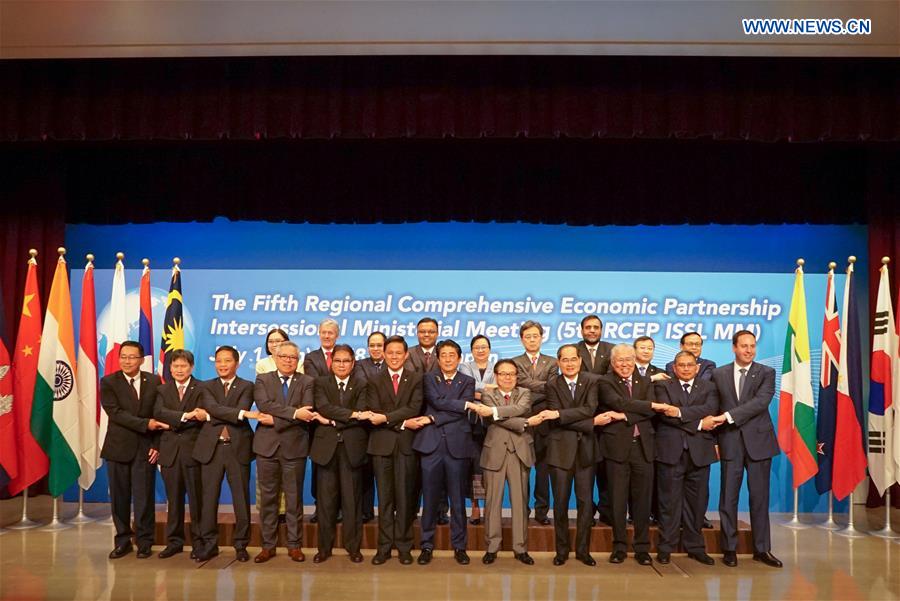Substantial progress in RCEP negotiations amid global trade turmoil
- By Zhou Shixin
 0 Comment(s)
0 Comment(s) Print
Print E-mail China.org.cn, October 18, 2018
E-mail China.org.cn, October 18, 2018

The 6th Regional Comprehensive Economic Partnership (RCEP) Intersessional Ministerial Meeting was held in Singapore on Oct. 13, 2018. The meeting held in-depth discussions on a wide range of issues including trade in goods & services, investment, e-commerce, and competition policies. The Joint Media Statement issued at this intersessional ministerial meeting emphasized the need for further improvements, while highlighting the fact that all parties have narrowed the gap in several areas and made great progress.
According to the Joint Media Statement, RCEP members agreed to overcome the difficulties and challenges encountered in their negotiations, and resolved to conclude the negotiations on commodity trade, service trade, investment trade, intellectual property rights, etc. by the end of 2018. If such trends continue, concluding all deals made by RCEP by the end of 2019 looks promising. When RCEP is implemented and has positive results, it will greatly alleviate and hedge the negative impact of global trade protectionism, and will help maintain the healthy development of the global multilateral trading system.
RCEP plays an important role in the global and multilateral trading systems represented by the WTO, catering to the status and trend of globalization and regionalization, in line with the correct tide of the times. The goal of RCEP is to achieve a comprehensive, mutually beneficial, modern, and high-quality free trade agreement. It can then set an example for other developing regions to establish a similar regional multilateral free trade system.
Despite its ambitions, there are still many difficulties for the RCEP countries to conclude negotiations. One factor is the various economic development levels of the 16 RCEP member states. There are also big gaps in the understanding and familiarity of free trade norms and their execution capabilities, which lead to different demands and concerns in various areas of the RCEP. However, RCEP members have eventually gained greater confidence in the possible benefits after re-balancing the advantages and disadvantages of free trade, and promoted progress in their negotiations.
As the largest economy in RCEP and the second largest market in the world, China is the largest trading partner of most RCEP members, which determines China's weight and sensitivity in the RCEP negotiation process. China has always conducted open negotiations with other member states as an equal partnership to reach a definitive agreement that meets the wishes and interests of all parties. China has always stressed that all parties must properly balance their interests and responsibilities, and make choices in the RCEP negotiations to promote breakthroughs in the negotiations. This is also the essence of the negotiations.
Secretary-General of ASEAN Dato Lim Jock Hoi also participated in the 6th RCEP meeting and signed the "Joint Media Statement." To a certain extent, this means that ASEAN, as a constructive regional organization, hopes to be a leader during and after the RCEP negotiations and at the center of the future RCEP free trade framework. On the other hand, with the second RCEP summit to be held in November this year, it's possible that RCEP may establish its own cooperative mechanism, which will be in parallel with the regional multilateral cooperation mechanism led by ASEAN, with both organizations aiming to progress together.
Dr. Zhou Shixin is a research fellow with Shanghai Institutes for International Studies.
Opinion articles reflect the views of their authors, not necessarily those of China.org.cn.






Go to Forum >>0 Comment(s)